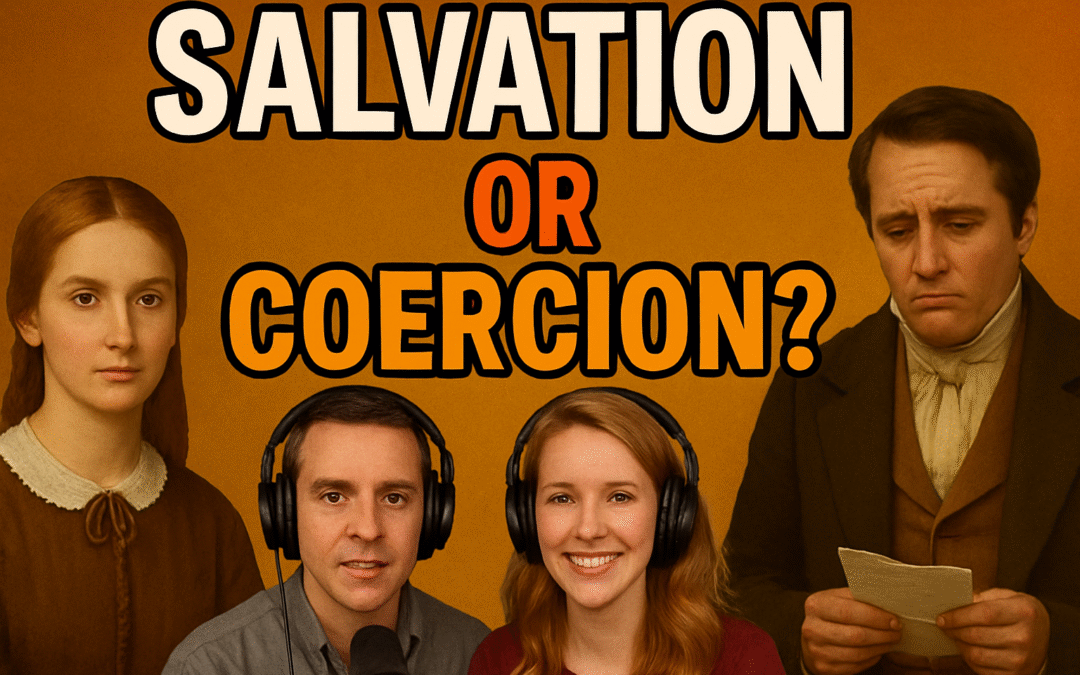Bottom Line
Joseph Smith’s sealing to Helen Mar Kimball was difficult, doctrinal, and ethically uncomfortable — especially due to her age. But there is no record that she, or her parents, considered it forced, fraudulent, or abusive. If we accept their testimonies, we must grapple with a hard truth: this wasn’t trafficking — it was religious sacrifice, however foreign that looks today.
| Podcast | Mormon Stories |
|---|---|
| Episode | “Did Joseph Smith Engage in Human Trafficking?” (Ep. 1794) |
| Title | Did Joseph Smith Promise Salvation in Exchange for a 14-Year-Old Bride? |
| Category | Historical Polygamy / Coercion & Spiritual Abuse |
| Quote | “Joseph Smith is offering Heber C. Kimball eternal salvation and exaltation… in exchange for his 14-year-old daughter.” — John Dehlin, 01:56:58 |
| Core Claim | Joseph Smith manipulated Heber C. Kimball into giving him his 14-year-old daughter Helen Mar Kimball as a plural wife, by promising exaltation for the family — a form of spiritual bribery and coercion. |
| Conclusion | Partial Truth / Ethically Troubling but Not Forced |
| Logical Questions |
|
🔍 Core Findings
🧭 The Alleged “Bargain”: Marriage for Salvation
This accusation stems from a widely cited passage in Helen Mar Kimball’s later writings where she recalled Joseph promising:
“If you take this step, it will ensure your eternal salvation and exaltation and that of your father’s household and all of your kindred.”
— Helen Mar Kimball Whitney, Why We Practice Plural Marriage (1884)
Critics frame this as a quid pro quo: a teenage girl exchanged for heavenly reward. The language is uncomfortable, yes. But it’s essential to examine how Helen understood this offer — and whether she considered herself a victim.
📜 Did Helen Say She Was Forced or Tricked?
Helen Mar Kimball was 14 years old at the time of her sealing to Joseph. That age is deeply problematic by today’s standards. But she was not a random, uninformed girl. She was:
- The daughter of a top Church leader (Heber C. Kimball)
- Raised in a home familiar with intense religious sacrifice
- Offered the chance to seek her own spiritual witness
She later described spiritual difficulty and emotional struggle — but she never claimed to be physically forced or spiritually deceived.
“I would never have been sealed to Joseph had I known it was anything more than a ceremony. I was young, and they deceived me by saying the salvation of our whole family depended upon it.”
— Reported in Catherine Lewis, Narrative of Some of the Proceedings of the Mormons (1853)
This quote is often used as evidence of regret. But Helen also defended plural marriage in her adult life — and she never described herself as coerced. She accepted the sealing as a sacred principle once she matured in faith.
🤝 Was Her Father Manipulated?
Heber C. Kimball did arrange the sealing. Critics describe it as a “trade,” and Helen used the metaphor of being the “lamb laid on the altar.” But again, this reflects a deeply religious worldview — not a criminal transaction.
No historical record indicates that Heber felt “bribed” or “defrauded.” To him, sacrificing for the gospel — even with his family — was a sacred Abrahamic principle, not extortion.
“This principle was established by the Prophet Joseph Smith… for the purpose of raising a righteous seed.”
— Helen Mar Whitney, Plural Marriage as Taught by the Prophet Joseph Smith
⚖️ Ethical vs. Criminal
Let’s be clear: sealing a 14-year-old to a 37-year-old is ethically problematic by today’s standards. Even Brigham Young later discouraged similar age gaps. But to call it coercion or fraud collapses under historical scrutiny:
- Helen’s testimony reflects religious belief, not deceit.
- She later wrote of her sealing in terms of sacrifice and faith — not trauma or betrayal.
- Neither she nor her parents described the offer as a spiritual bribe.
“The promise of salvation in exchange for obedience to plural marriage was doctrinal, not transactional. All temple covenants include conditional promises. This does not constitute trafficking or fraud.”
— Mormoner.org – Helen Mar Kimball Case Study
📚 Sources
- Helen Mar Kimball, Why We Practice Plural Marriage (1884)
- Catherine Lewis, Narrative of Some of the Proceedings of the Mormons (1853)
- Hales, Joseph Smith’s Polygamy, Vol. 2, pp. 348–359
- Bushman, Rough Stone Rolling, pp. 440–442
- JosephSmithsPolygamy.org – Helen Mar Kimball
- Mormoner.org – Helen Mar Kimball Case Study

